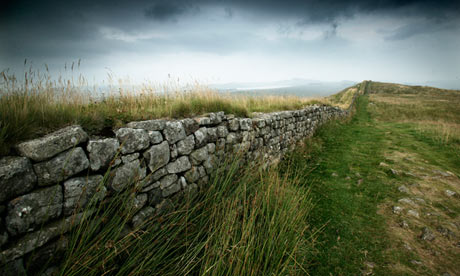
At the British Museum in London is a massive exhibition from Pompeii and Herculaneum – cities near Naples in Italy that were overwhelmed by a volcanic eruption in AD79. These extraordinary places and people, "frozen" as they died, display a unique glimpse of Roman life and death. One of my favourite pieces of graffiti can be seen, I am told, in a latrine in Herculaneum: APOLLONIUS MEDICUS TITI IMP. HIC CACARET BENE – in other words, "Apollonius, physician of the emperor Titus, had a good crap here".
Just as fascinating is the news of the discovery of entire streets of Roman London, being excavated in the shadow of those glass-clad financial buildings, reminding us that Roman civilisation is much closer to home than we generally think, not just in the shadow of some faraway volcano, but under our own grey skies. There are writing tablets, love letters, clothes, buildings and a wooden door: it's the largest collection ever found in a single site in London. Much of this material will go on display in the Museum of London.
But you don't have to go to Italy; you don't even have to go to the British Museum or the Museum of London to see such treasures. Even if, like me, you live in the back of beyond, you can almost certainly find Roman remains within a few miles of where you are now.
A few years ago I presented a television series, What the Romans Did for Us. During filming I was on a steep learning curve, and I was utterly fascinated to see what a wealth of buildings, roads, art and technology the Romans brought here and left behind. Hadrian's Wall, built in the AD120s, for a long period marked the northern boundary of the Roman empire. It remains the largest single Roman artefact in the world, and it includes such treasures as the latrine block at Housesteads fort, the baths at Segedunum, the postcards at Vindolanda, and the gravestones of "Roman" soldiers from Africa and Syria. Occasionally the Romans ventured further north – Antony built his own frontier, the Antonine Wall, still visible in Glasgow's Bearsden – but generally they stayed in England and Wales.
Where they settled, the Romans built camps. Those camps became towns, and the Latin for camps, castra, became part of the English names – Chester, Cirencester, Doncaster, Dorchester, Exeter, Manchester. Another Roman stronghold was the city of Eboracum (now York), from where the entire empire was ruled for a time. Constantine was proclaimed emperor here, and a fine statue of him sits beside York Minster.
People really have not changed much since Roman times. We have masses more technology – how they would have loved mobile phones, or even bicycles – but they did have running water, flushing toilets, and underfloor heating. Today we still have the same needs, wants and lusts: clothes, houses, money, jewellery. And defence against all sorts of threats were obsessions for them as they are for us. You will find ample evidence of this at the museums in ancient Roman cities – not only London but also Chester, Lincoln and especially Colchester, which was for a time the Roman capital, and boasts more than 750,000 Roman artefacts. Looking at these things made 2,000 years ago is eerily like looking in our own cupboards today – or even like looking in the mirror, since we are so like those ancient Romans.
The real point is that, just down the road, you can almost certainly find the spoor of the Roman occupation. It's there in the roads (for example, Watling Street forms the foundation of the straighter bits of the A5), the villas (at Great Witcombe and Chedworth), forts (at Portchester and Pevensey), the mosaics (at Bignor and Fishbourne), the stadia (at Caerleon and St Albans). But it's there too in the smaller artefacts in almost every museum in the country.
Any children with a thirst for knowledge of this great and glorious civilisation don't need to dream of a trip to Pompeii. They can experience it close at hand, thanks to the efforts of local authority archaeological departments and devoted museum curators. And by taking them there, you can help these beleaguered institutions and spark the will to support them for future generations.

